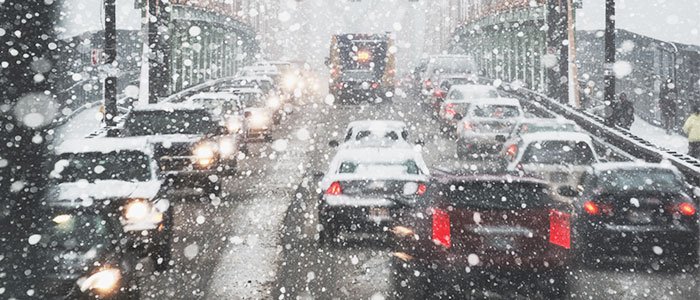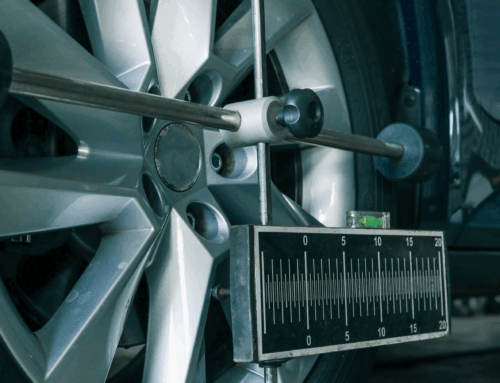Winter is coming.
And not just any winter: Canada’s in for a cold and snowy one. More so than usual, according to the U.S.-based weather forecasting service AccuWeather.
There’s expected to be anywhere from 10 to 50 per cent higher-than-normal snowfall across parts of Ontario up to southern Quebec, and dangerously cold spells in Western Canada, especially in the Prairies. With these weather conditions approaching, some winter essentials are a must. Among those essentials are winter tires.
Why are winter tires so important?
When the weather gets chilly, most people remember to throw on a hat and scarf, but what they may not think about is driving safety.
When it’s below 7 degrees Celsius, there’s a clear difference in performance between winter tires and all-season tires. That’s right — it’s not just snow that can affect the performance of your vehicle! Modern winter tires offer up to 50 per cent more traction than all-season tires.
Summer and all-season tire rubber hardens as temperatures drop, which means by around 14 degrees below zero, they’ve lost the majority of their grip. Meanwhile, winter tires do the opposite. Their rubber compounds gain grip as temperatures fall, and additions like rain, sleet, or snow on the pavement only increase the traction differences between all-season and winter tires.
There’s a clear difference in performance between winter tires and all-season tires once temperatures drop below 7 degrees Celsius.
When driving on wet or snowy surfaces, tire rubber pushes the dampness into water channels to get it out from under the tire’s surface. Softer rubber, like that used in winter tires, does this better than all-season tires do. They also have more grooves than all-season tires, so they’re able to get to a dry patch again quicker.
Winter tires in Canada
Over the past decade, winter tire use in Canada has almost doubled. As of 2016, 67.9 per cent of Canadians were using winter tires. This is a big jump from the 35 per cent that took part in 1998.
This may be partly due to new legislation and initiatives in place to help increase the number of people trading out their all-season tires for more weather-appropriate ones.
Ontario has legislation that provides a discount on auto insurance premiums for drivers using winter tires. British Columbia enacted a law requiring winter tires on specific highways and roads between October 1 and March 31. And Quebec introduced a mandatory winter tire law across the province in 2008.
A 2011 study by the ministère des Transports du Québec found that after the first two seasons of enforcement in Quebec, there were noticeable road safety benefits: road collisions in the winter decreased by 5 per cent, 574 fewer people were injured annually in winter road collisions, and deaths and serious injuries due to winter road collisions decreased by 3 per cent.
After introducing a mandatory winter tire law in Quebec, 574 fewer people in the province were injured annually in winter road collisions.
But there’s still work to be done on educating customers about the benefits of winter tires; some Canadians still doubt their usefulness. In a survey commissioned by LowestRates.ca, it was revealed that almost a third of Canadians think winter tires are a ‘cash grab’, and one in four drivers said they think they aren’t much better than all-season tires.
Some tips for car dealers
Here are just a few tips to help you make sure your customers are using winter tires correctly and being as safe as possible:
- The Tire and Rubber Association of Canada advises that drivers install four winter tires, not two. Installing two on the front of the vehicle only will only increase the grip in the front and could result in oversteering. Meanwhile, installing two only on the rear only increases grip in the back and could lead to understeering.
- It’s a good idea to have winter tires installed as soon as the temperature dips below seven degrees Celsius, rather than waiting for the first snowfall of the year. If you can already see your breath outside, you’ve waited too long!
- It is important that people are educated on what defines a winter tire. For example, to look for the Three-Peak Mountain Snowflake symbol (also referred to as the Alpine symbol).
So help keep the roads safe this winter and help educate drivers on the importance of winter tires. They’re an important safety feature for anyone on the road. The numbers say it all.
This blog is provided for information only and is not a substitute for professional advice. We make no representations or warranties regarding the accuracy or completeness of the information and will not be responsible for any loss arising out of reliance on the information.







